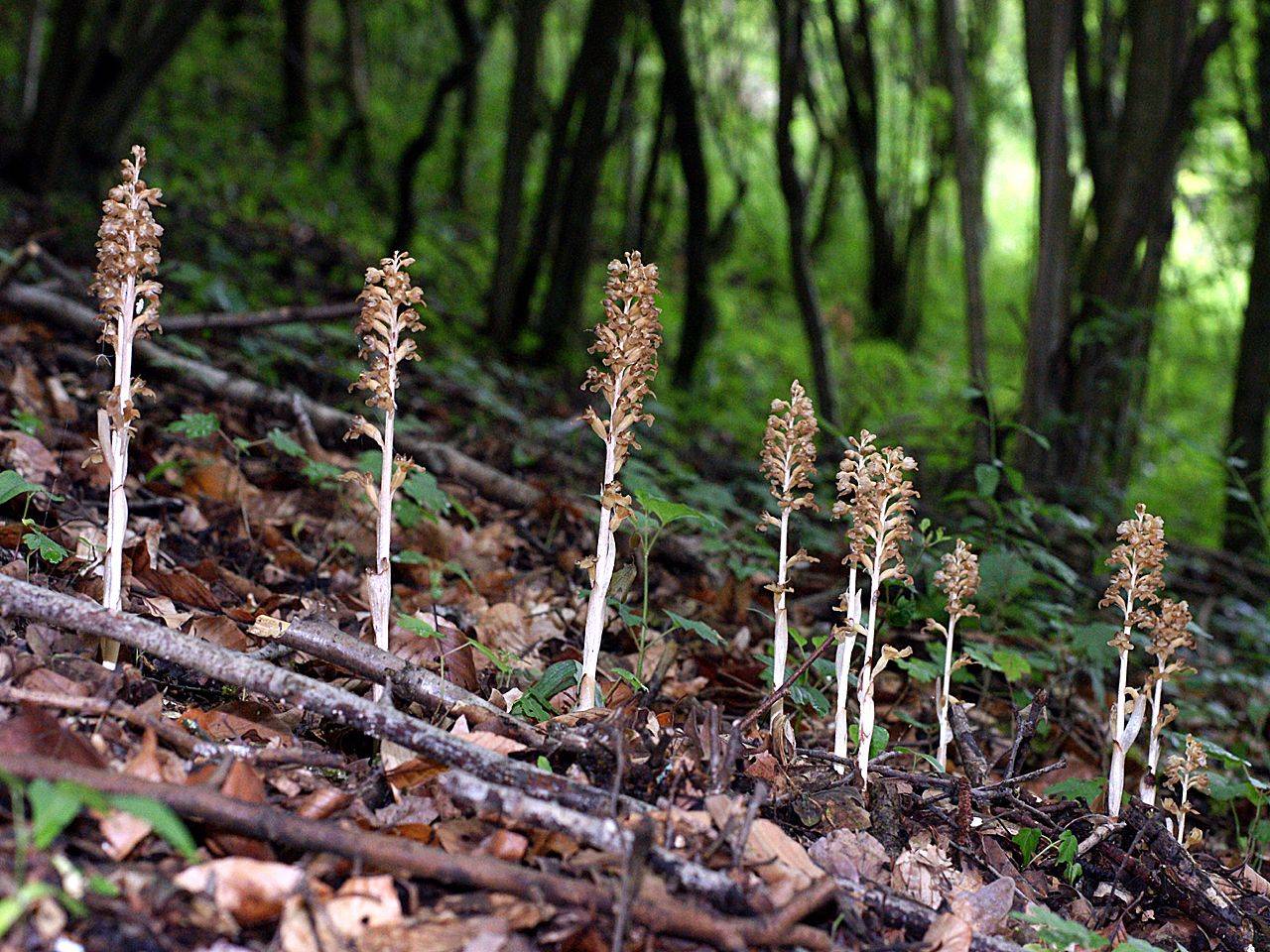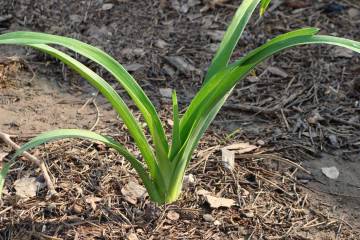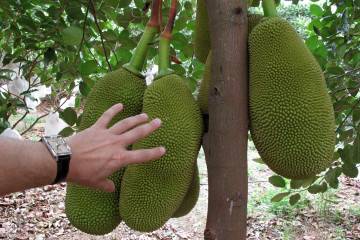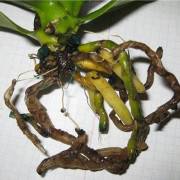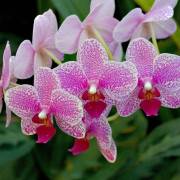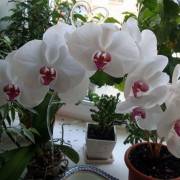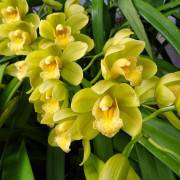Ohidea in nature in its natural environment: where and how it grows
Content:
The world of orchids is something beautiful. Plants like to call flowers of seduction, they write poems and sing songs about them. And the mystic writer from Australia G. Meyrink, impressed by the enchanting appearance, called them the flowers of Satan.
Everyone is familiar with indoor flowers, but few have seen orchids in the wild.
Many types of these flowers are a stunning sight: they bloom in large inflorescences in different variegated shades. The easiest way to find such a beautiful picture is in the tropics and temperate regions. Various species of the Orchid family are found all over the world, except for Antarctica. Today there are more than thirty thousand species.
How orchids grow in the wild
Orchids are of the following types:
Saprophytes
This species has no leaves. They take root deep underground and feed on humus. Saprophytes also do not have chlorophyll, so they can live comfortably in the shade. They feed on substances produced by the fungus.
Epiphytes
This type of orchid grows on trees. Phalaenopsis and wanda, the most common species in this family, are of this type. The function of retention on the surface is performed by their open root system.
Lithophytes
Flowers growing on stones are called lithophytes.
Terrestrial representatives of the Orchid family grow on loose, air and moisture permeable soil. In Europe, they grow up to half a meter, in the tropics they grow wider and longer and resemble a spreading bush.
Where do orchids grow?
An orchid grows in nature where it can receive enough light, air and moisture. Epiphytes take root best in the tropics. They are often found in Africa and South America. In temperate climates, terrestrial flowers are often found. They choose steppes and plateaus, most of all terrestrial orchids grow in Europe and the United States of America. Wild phalaenopsis is most commonly found in the Andes, as well as in the mountains of Brazil and southeast Asia.
First mentions
The first mentions of orchids are found in ancient Chinese scrolls. Confucius himself wrote about them, comparing their smell with the words of close friends. In ancient Greece, the orchid was used to achieve success in love affairs, as well as for various rituals.
There is a legend that in the II century. BC e. the orchid helped the empress of China give birth to children, whom she and her husband had dreamed of for several years. At the same time, the Chinese character for orchid appeared.
in the 1st and 2nd centuries. n. e. Chinese scientists have written many scientific papers about the healing properties of these plants. There is also information that in the II century.the Mexicans used the flower to make national drinks. In the following centuries, many books and monographs were written about orchids in different parts of the world.
Life cycle
In places where the largest number of these flowers bloom, there are usually no strong changes in temperature, so the orchid grows continuously in its natural environment, but if climatic conditions change, then the flower goes into forced rest and waits for favorable conditions to bloom again. During the period of temporary dormancy, the physiological processes of the plant are suspended, so it may not be recognized. At this time, it looks like a grass like a lily of the valley.
Representatives of the Orchid family have a long life span - from 60 to 100 years, sometimes more.
When and how the plant was first introduced to Europe
The plant was introduced to Europe in the second half of the 18th century. It was brought by travelers from South America. According to legend, a botanist from Great Britain received a gift from his friend the seeker in the form of a shriveled orchid. He planted it, and the beautiful flowers that appeared later became the beginning of the plant's popularity. However, until the orchid took root in Europe, it took about a hundred years.
Botanists carried out many experiments in greenhouses until they could grow the first flower. The orchid quickly became popular, having such a flower in your home was considered a sign of luxury, and the demand for it grew rapidly. The popularity of flowers grew even more when rumors surfaced that the orchid was an aphrodisiac. Many added the tubers of the plant to love drinks and believed in its miraculous power.
Wealthy collectors were willing to buy plants for huge rewards, so money hunters went to the rainforests, overcame many obstacles to get hold of these precious signs of luxury. However, many did not manage to safely bring flowers to Europe, since the long road for them often became destructive.
Orchids were loaded in tons on ships for profit, and for this reason, many species of plants died during the orchid fever. Over time, a greenhouse suitcase was invented, which let in light, moisture and protected from direct sunlight. However, while some were hunting, others were looking for ways to domesticate the Orchid family. And already in the XIX century. botanists experimentally began to grow new varieties.
Where were the orchids brought to Russia from?
The first wave of interest in sensational flowers came to Russia in the 19th century. Flowers were brought from England and Germany for the royal family and noble families. The second wave captured the country after the Second World War, when the greenhouses of famous German collectors were brought to Russia. At the end of the forties, the era of industrial cultivation of representatives of orchids began in Russia.
Phalaenopsis orchid in natural environment on a tree
Phalaenopsis is often called a moth because of the bizarre shape of its petals.
Phalaenopsis belongs to epiphytes, therefore it usually grows hanging from trees or sitting on a stone. It is not a parasite and does not harm its support. Phalaenopsis has an open root system, so it absorbs moisture directly from the air.
Phalaenopsis in the wild prefers tropical forests with high humidity as a habitat. In such forests, it is provided with good air circulation and protection from sunlight. Wild orchids reproduce freely by seed and receive moisture and nutrients from their roots.
Marveling at the beauty of the flower, botanists tried for decades to grow it in greenhouses, but all was unsuccessful.Although phalaenopsis is an unpretentious plant, it cannot grow without a constant flow of air. In the tropics, phalaenopsis grows literally everywhere, hanging from trees and stones.
Comparison of wild and domestic plants:
- a domestic plant differs from a wild plant primarily in its life cycle. Wild ones can live up to a hundred years, while domesticated ones are 10 times less;
- wild plants delight with abundant inflorescences, while domestic ones form a couple of branches;
- houseplants bloom several times a year and then with proper care, or they may stop growing altogether. Wild orchids bloom almost constantly;
- flowers of domestic plants are smaller, wild ones, on the contrary, are larger;
- wild plants can reach up to 2 m in height, while domestic plants are two to three times smaller;
- wild orchids reproduce by the seed method, while indoor orchids are not capable of this;
- phalaenopsis in nature grows on supports in the form of trees or stones, indoor phalaenopsis do not need supports;
- botanists have developed a large number of indoor plant varieties that can grow in dry climates;
- wild plants are much brighter and there is a wide variety of flowers.
A wild orchid is much prettier, brighter, taller than a houseplant. Sprawling inflorescences amaze the imagination, and a pleasant smell intoxicates the mind, it is not for nothing that Europe has been in orchid fever for decades. There is a belief that it is possible to get rid of alcohol and cigarette addiction, but it is impossible to get rid of orchid addiction. Plants are called a miracle of nature.
Despite the fact that the number of orchid species is more than 30 thousand, some species are still under threat of extinction. It is not known how many species were killed during the fever in Europe, when the plants were loaded onto ships, cutting down entire forests, and on the way were forced to be thrown from ships so that the ships would not drown along with the crew. However, one thing is clear that only a few dozen are suitable for home cultivation. Therefore, you should not take a flower from your trip; it is better to buy it at a local flower shop.
